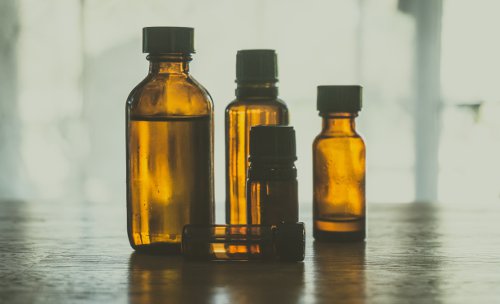Essential Oils
What are Essential Oils?
We hear about them all the time: their delicious scents, their health benefits and the host of wonderful homemade products which can be made from them. But what are essential oils, exactly?
In short, essential oils are organic compounds which are derived from seeds, bark, roots, flowers and other plant sources. So actually, although we call them ‘oils’, they’re actually complex chemical compounds. Interestingly, the plants which produce these naturally occurring essential oils use them themselves for infection control and for attracting or repelling animals, birds and insects.
The process of extraction varies from case to case, but there are three main methods for getting these compounds out of each material.
Steam distillation
This is the most common method for extracting essential oils. It involves passing steam over the materials in a still. This steam is then passed into a condenser which generates a liquid which is made up of both oil and water. Once this liquid is cooled, the oil part will naturally settle on the top for collection.
Expression
This method is most commonly used for extracting essential oils from citrus fruits. The method basically involves compressing the peel and squeezing the essential oil from it. The peel is grated or scraped for collection and, because expression isn’t a heat-based extraction method, the resulting expressed oil smells just like the delicious scent released when an orange or lemon is zested.
Solvent extraction
This method is a little more complicated and is reserved for the more delicate flowers such as roses, jasmine and neroli. Petals are collected and then soaked in a chemical solvent which works to dissolve the natural aroma from the fibres of the plant. As a result, a sticky mass is produced (called a ‘concrete’) then processed to get rid of waxes and fats. What’s left over is called the ‘absolute’.
Solvent extraction requires a lot of petals to produce the smallest amounts of essential oil. This is why these oils are sometimes a little more expensive.
Aromatherapy and essential oil therapy: what’s the difference?
Really, these two names mean the same thing. ‘Essential oil therapy’ is a more descriptive term but ‘aromatherapy’ is more commonly used in the marketplace.
However, the term ‘aromatherapy’ implies that these essential oils can only deliver benefits through inhalation, but there are so many other ways in which we can use essential oils.
Many people use oils such as lemon and tea tree as a natural all-purpose cleaner. Citronella and lemongrass can help to see off irritating bugs in the spring and summer (many people use these to make mosquito- and wasp-repelling candles). Lavender oil can add a delicious flavour to home-baked cakes and many people add a few drops of this or another favourite essential oil to their vacuum cleaner’s bag to disperse a pleasant, lasting scent as they clean.
Essential oils have endless uses, so stock up and you’ll always have the right oil for the task at hand.


